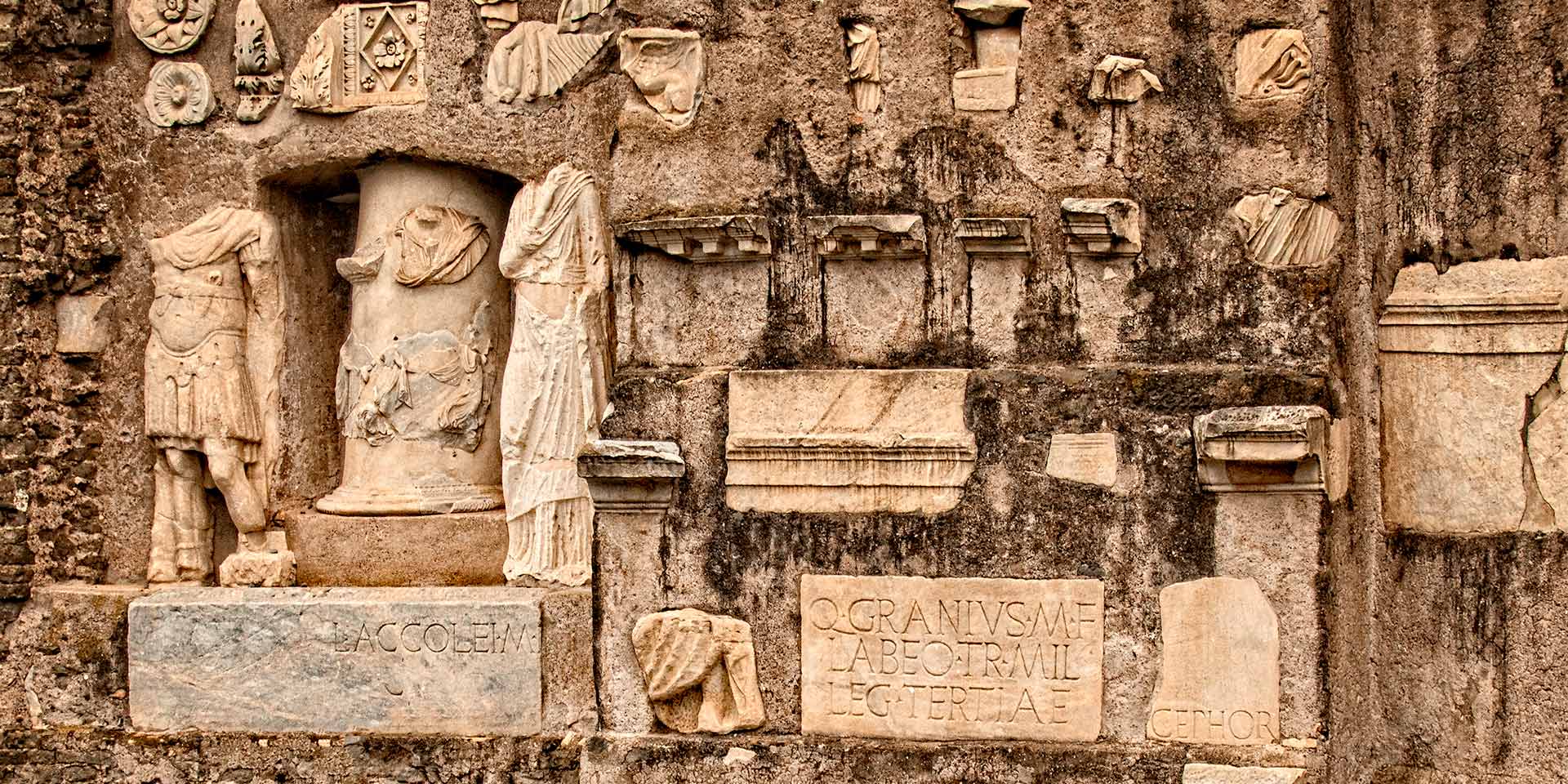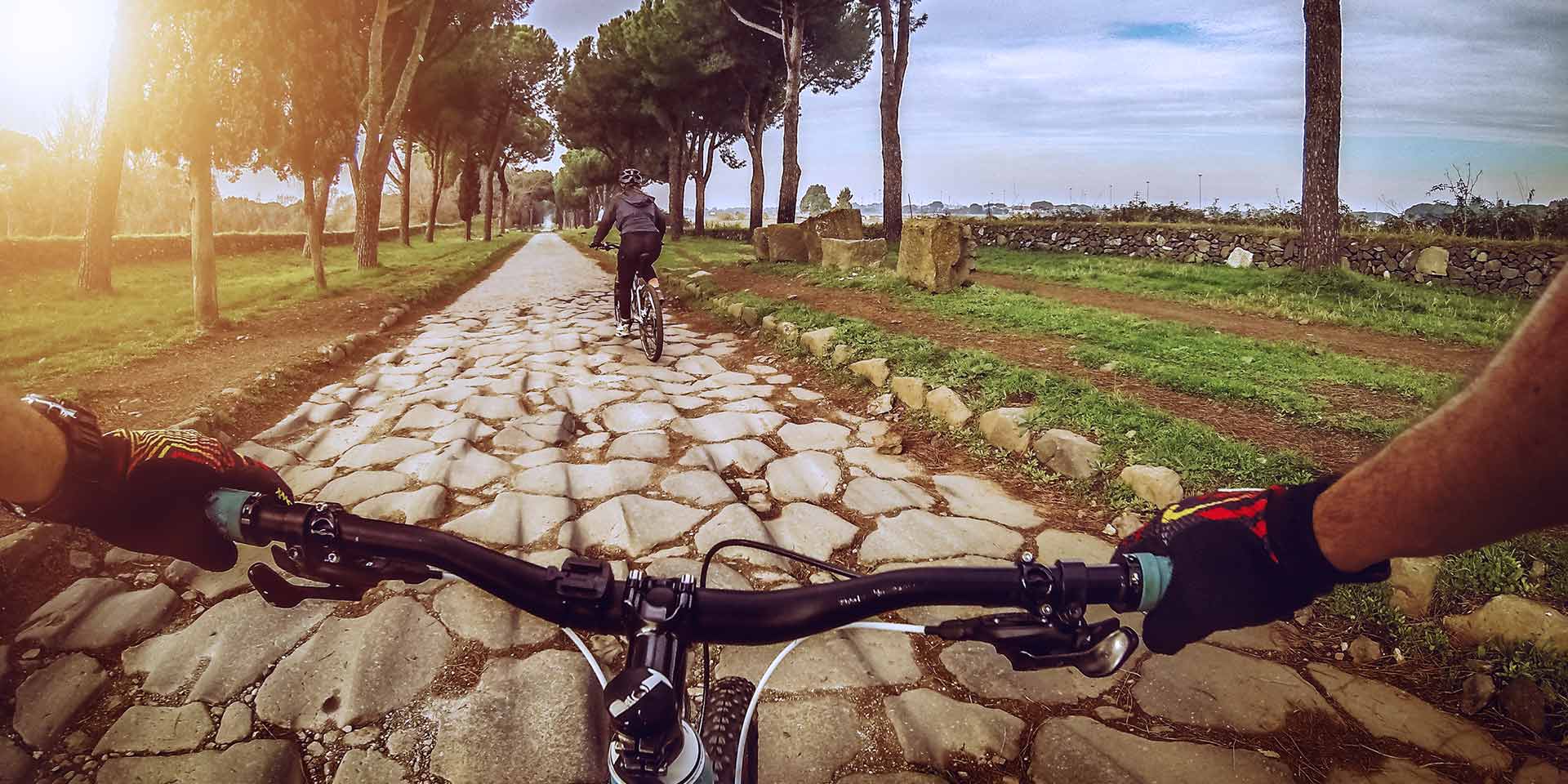Rome’s Antica Appia, also known as the Appian Way or, officially, Al Parco Regionale dell’Appia Antica, ushers visitors away from crushes of tourists and the maddening miasma of Roman traffic and into the bucolic bliss of 2,000-year-old ruins, basalt-stone-blanketed streets and a countryside that evokes a Rome of centuries past.
Ancient Rome was famous for its almost psychotically straight roads that etched their way throughout Europe and around the Mediterranean (remember the phrase “all roads lead to Rome”?).
And the most famous road was the Appian Way, first constructed in 312 B.C., which stretched southward 350 miles from the Eternal City to the coastal town Brindisi.
Where to Begin
To reach the Via Antica Appia, it’s a 10-minute bus ride from Rome’s Circo Massimo (on bus #118) or a 20-minute stroll.
Either start your journey at San Sebastian Gate — part of the 1,700-year-old Aurelian Walls (and the best preserved gate in Rome) — or stay on bus 118 to the visitors center (at Via Appia Antica 58) to pick up free maps and other information.
Be sure to check out the nearby 17th-century Church of Domine Quo Vadis? — which got its name because it was here on this spot where, around the year A.D. 67, the Apostle St. Peter was retreating from Rome hoping to escape persecution when he had a vision of Christ: “Where you going?” or in Latin, “Quo vadis?” he asked Christ. “To Rome,” Jesus said, “To be crucified again.”
And, as the story goes, Peter turned around and gave himself up to Roman authorities to be martyred. It’s said that Jesus’s footprints have been miraculously preserved in the Church of San Sebastiano down the road from the Church of Domine Quo Vadis? at Via Appia Antica 136.

A Visit to the Underworld
As you explore the Appia Antica, consider descending to the netherworld in one of the many catacombs that flank the road. Ancient catacombs are sprinkled throughout the Appian Way.
Early Christianity in Rome was shaped in these underground spaces because believers would practice here in secret next to the graves of the early martyrs.
Try the Catacombs of San Callixtus or, just farther down the road, the Catacombs of St. Sebastian. Guided tours lead guests below the surface of the earth to traverse the lanes of the necropolis, revealing ancient gravesites.
Keep Your Eyes on the Road
Until now pedestrians have had to share the road with cars — though the city closes the road to automobile traffic on Sundays — but at 184 Via Appia Antica, across from the ruined 2,000-year-old Mausoleum of Cecilia Metella, the road starts to look as it did 20 centuries ago.
Paved with irregularly shaped basalt stones, this stretch is complete with chariot grooves in the road, and cars are fewer and farther in between. This is the real Roman countryside and evocative of pre–industrial age Rome.
Play Paparazzi
As you continue down the road, ruined mausoleums turn to mansions and Fiats become Ferraris. This is a Roman celebrity zone, so keep your eyes peeled: You never know what dashing Italian actor or fashion designer you might run into.
Mangia!
If all that ancient Rome sightseeing builds up an appetite, the Appian Way houses a few great places to fill up on classic Roman fare. At Qui Nun Se More Mai (Via Appia Antica 198), feast on Roman pasta classics like carbonara or cacio e pepe and meat from the open-fire grill.
For those seeking a full-on ancient Roman experience, grab a seat at Hostaria Antica Roma (Via Appia Antica 176), housed in part of a two-millennia-old mausoleum, where you can tuck into dishes made from a cookbook written in the first century, such as an ancestor to lasagna made with cheese, fennel and beef.
The bad news is that after your day out of the city, you’ll have to head back to the bustling center of Rome. The good news: The Appian Way has existed for more than 2,000 years and will certainly be around tomorrow, or even on your next trip to Rome, for you to further explore.




